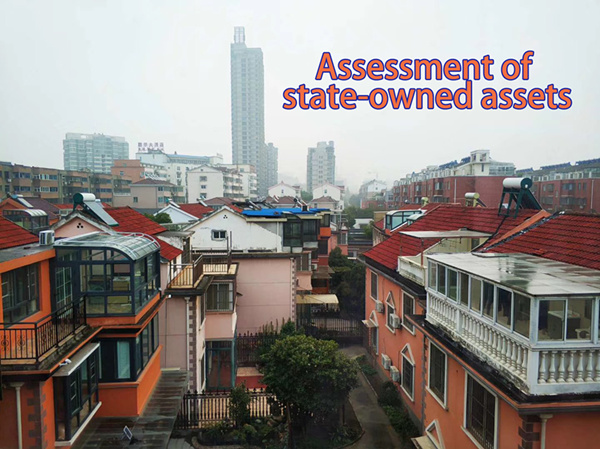Improve the Measures for the Assessment of State-owned Assets and Their Proper Transactions in the Market
2018-11-29

By Research Team on “The Development of Mixed Ownership Economic Entities”, DRC
2018-10-8
The assessment and transactions of state-owned assets in the market are the basis for the development of mixed ownership economic entities and important means for preventing the loss of state-owned assets. In a bid to regulate the transactions of state-owned assets, China clearly stipulated relevant issues including the transfer of property rights, capital increase of companies and the transfer of major assets of companies as early as in 2004. The subject matter of a transaction must be evaluated. The transaction price should be based on the assessment results that have been approved or filed. And the transaction must be conducted publicly in a law-based property rights trading agency. The asset evaluation and transactions in legal agencies can discover the underlying value of the transaction target, ensure a fair price and prevent the loss of enterprises’ state-owned assets. However, in practice, due to the problem of non-standard evaluation and perfunctory procedures in the process of transactions, the above-mentioned arrangements have not played their due role and the value discovery and value correction functions of assessments have not been fully utilized in the market.
I. There are irregularities and unreasonable issues in the assessment of state-owned assets. First, the operation of assessment agencies is not standard, and it is easy to cause unfair and unreasonable evaluation of stated-owned assets. Second, there is no assessment or low evaluation of intangible state assets. Third, due to various reasons, the management departments of the underlying assets provide false information and materials or collude with the assessment agency in order to undervalue the assets or even leave out the evaluation of some assets, resulting in an inaccurate asset evaluation. Fourth, the land use rights are undervalued. The above-mentioned problems are spawn by various reasons, such as inadequate system design, non-standard asset appraisal industry and weak independent accounting power of the asset appraisal agencies. First, the asset evaluation itself has a lot of uncertainties featured by various appraisal methods, great subjectivity and non-clearly defined rules. Even with strict and standard procedures, the evaluation results by different agencies may vary hugely. Second, according to the current practice, although the evaluation agency is determined by the property rights holder, in fact, it is the enterprises of subject assets that sign contracts with the assessment agency and pay the evaluation fee. As a result, the assessment agency does not enjoy strong independent accounting power and is easy to be influenced by the management departments of the enterprises of subject assets. In particular, the transfer motivation of the enterprises of subject assets can exert a significant impact on the final evaluation. Third, the threshold of the asset evaluation market is low with a large number of evaluation agencies, fierce competition, different professional capabilities and inadequate credibility. On the one hand, the evaluation agencies are easily driven by vested interests and rush for quick results, which would lead to inaccurate evaluation results. On the other hand, it is easy for asset appraisers to meet the interests of the enterprise of subject assets or other transaction entities and undervalue assets on purpose. For example, asset appraisers could write off property losses and receivables with the excuse of “squeezing the water out” of the company.
II. In some cases people in charge often go through the motions, leading to low premium ratio in the transaction of state-owned assets in the market. Transactions made in the market is another way to prevent the loss of state-owned assets. The aim is to further realize the value discovery through market bidding, and avoid the inaccurate evaluation, but in the course of transactions, the perfunctory practice is very common. There are several reasons for the low premium ratio. First the time to disclose information is short in the transaction of assets; second, the information disclosed is too brief; third, the transferee of state-owned property rights often has a strong mandatory target. For the above-mentioned three reasons, state-owned assets trading in the market often cannot find enough transferees that meet the number of open bidding procedures. The final result is often concluded through making agreements. Such property rights transactions will not have the second value discovery and it is hard to effectively avoid the miscalculation made in the previous period from the perspective of the market.
III. Policy options for improving the assessment of state-owned assets are made as follows. First, property rights holders choose the asset appraisal agency to be in charge of the evaluation. Second, the method of simultaneous evaluation by two asset appraisal agencies should be adopted for major transaction projects. Third, the criteria for setting assessment objectives and choosing evaluation methods need to be clarified. Fourth, intangible assets need to be evaluated and managed strictly. Fifth, the credit file system of assets evaluation should be regulated. In addition, some policy options for state-owned assets trading in the market are raised as follows. First, major transactions of property rights should be made through bidding plus comprehensive assessment in the stock market. Second, the information of major property right transaction should be disclosed in details, and the minimum period for disclosure should be extended. Third, it should be stipulated that in the transaction of major assets, various measures should be used to find enough potential investors. Fourth, in terms of physical assets and small-value property rights, it is necessary to make full use of the online bidding to improve transaction efficiency. Fifth, the unified and standardized property rights trading market should be further improved.














